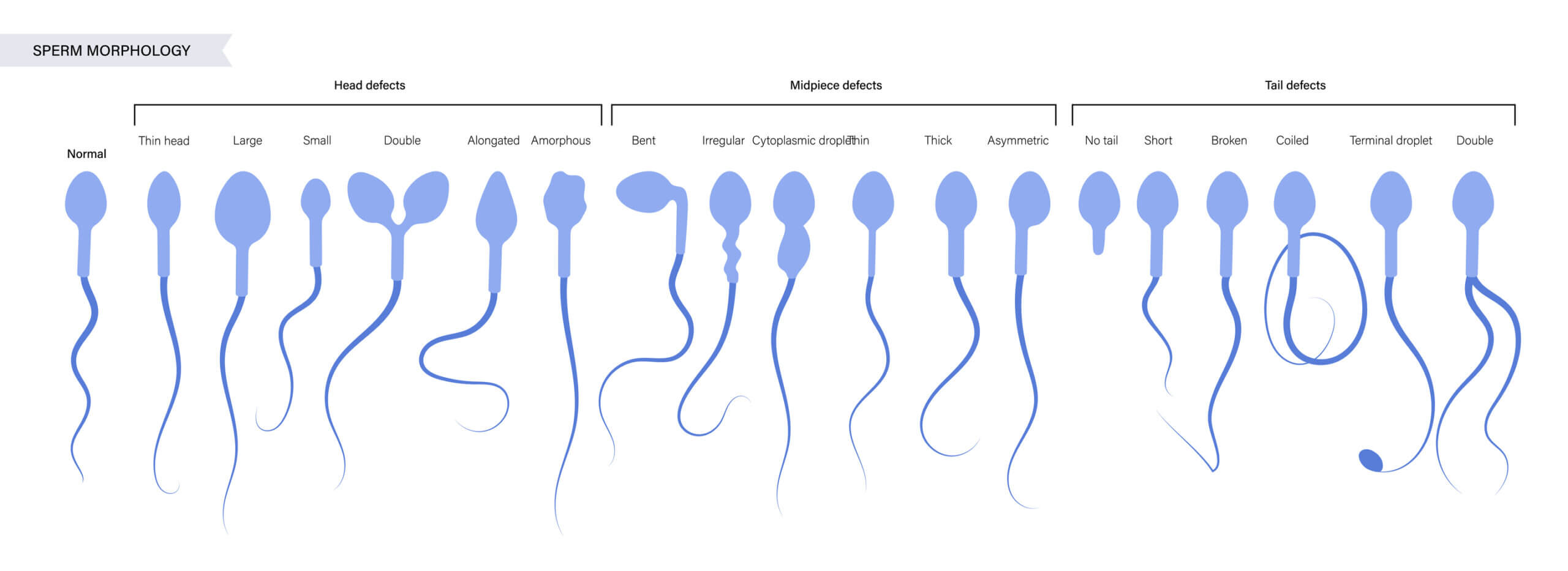Sperm morphology defects potentially impact fertility
Sperm morphology defects can be detected during diagnostic fertility testing. Sperm morphology refers to the size, shape and physical characteristics of sperm that is seen and measured under a microscope during a semen analysis.
Abnormally shaped sperm are common
Our in-house andrologists will visualize a subset of the semen, counting and determining the ratio of normally shaped sperm to those that have a morphologic defect. Normal sperm are shaped similar to a tadpole and have an oval head with a long tail. Abnormal sperm usually have head, midpiece or tail defects — such as a large or misshapen head or a crooked or double tail. These defects might affect the ability of the sperm to reach and penetrate an egg.

All men produce abnormally shaped sperm. In fact, the vast majority of sperm have some type of sperm morphology defect. Surprisingly, it is considered normal if just 4% of the sperm in a semen sample are normally shaped. Fertility specialists only become concerned when the ratio of normal to abnormal sperm is below 4% and has the potential to impact fertility. Having a large number of abnormally formed sperm in a sample and a low normal form score are signs of a condition called teratozoospermia.
Morphology defects may impact fertility
Because abnormally shaped sperm may not be able to move properly or quickly enough to reach and breach the egg’s protective membrane, fertility specialists may suspect these defects are contributing to a man’s infertility. However, in many cases, sperm morphology defects do not impact the sperm’s overall functionality. They may still be able to swim and penetrate the egg to fertilize it.
Most male fertility experts agree that the role of sperm morphology defects in predicting pregnancy is unclear, and that it’s a poor predictor of infertility unless nearly 100% of the sperm are abnormally shaped. Studies have shown that even men with no normally shaped sperm can still conceive naturally. Additionally, these misshapen sperm do not necessarily mean that there are problems with them genetically.
In vitro fertilization can often overcome any concerns with sperm morphology defects on fertility through the use of intracytoplasmic sperm injection. In this IVF lab procedure, the embryologist will pick up a single sperm and inject it directly into the egg to initiate fertilization.
Improving sperm morphology
Your body is always producing new sperm, so changes to your diet or lifestyle can impact the health of your future sperm. Some changes you should consider include losing weight, exercising regularly, and avoiding heavy drinking, tobacco use, or drugs, especially marijuana.
Your doctor may also recommend using natural supplements and vitamins to promote normal sperm morphology. These include Vitamin E, Vitamin C, Co-Enzyme Q, Omega-3 and zinc. Since it takes up to 3 months to produce mature sperm, it’s important to take these for at least 2-3 months prior to seeing the maximal benefit.


